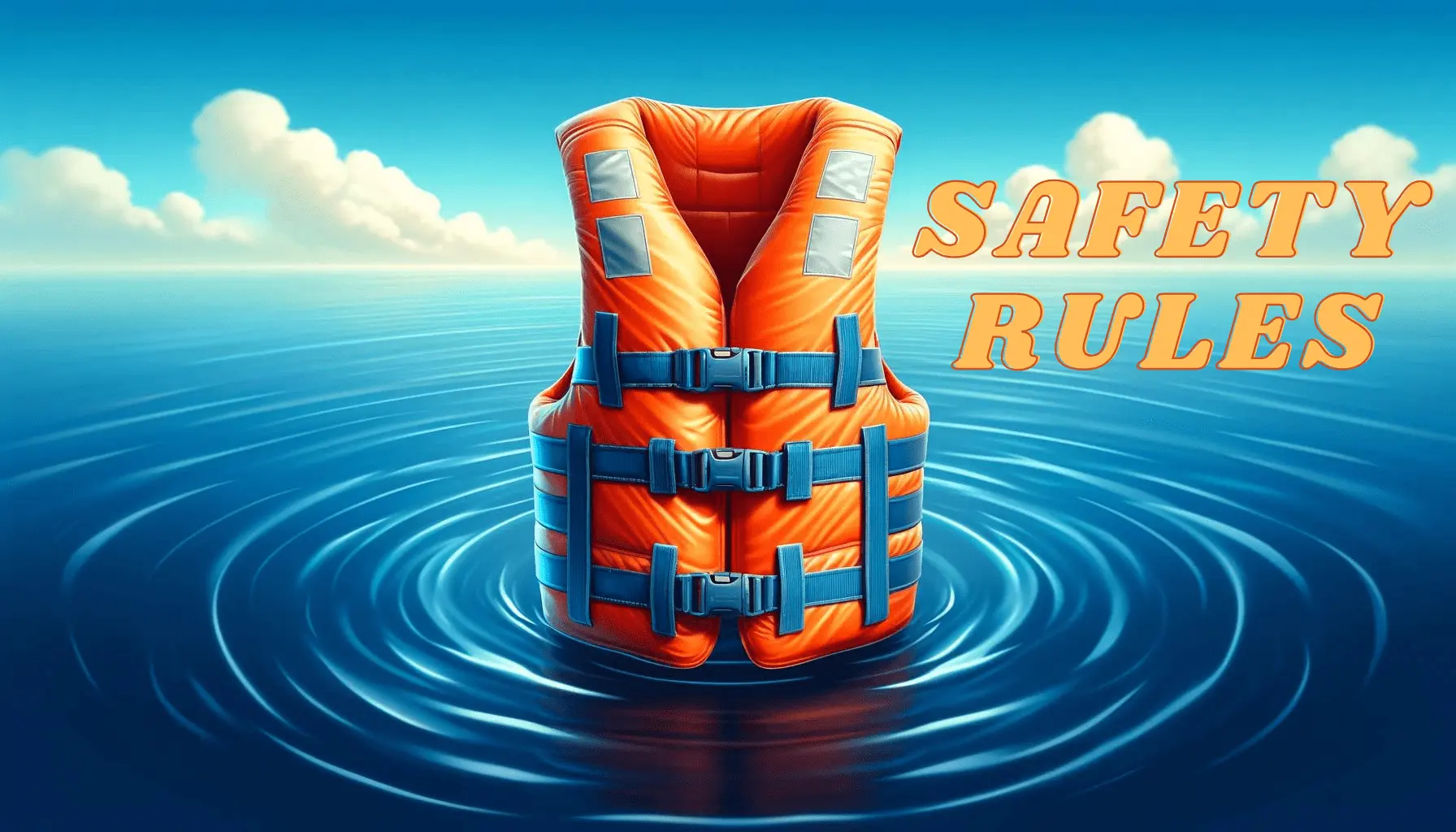For both seasoned paddlers and novices alike, selecting the optimal kayak materials is pivotal to aligning your vessel with your aquatic aspirations. The arena of kayak construction is as diverse as the bodies of water these crafts navigate. Different types of kayak materials dictate not just the kayak’s durability, but also its manageability, performance on water, and environmental footprint. The discerning kayaker knows that lightweight kayak materials can greatly enhance the ease of transportation and the pleasure of each stroke, while best kayak materials must also satisfy criteria for resilience and longevity.
When faced with the decision of crafting or choosing a kayak, key materials such as polyethylene set the standard for affordability and ruggedness—making it a go-to for many paddlers. Yet, avid kayakers may turn to sleek thermoforms or venerated composites like fiberglass for that seamless blend of aesthetics and efficiency. And let’s not overlook the burgeoning interest in eco-friendly kayak materials which underpins a growing environmental consciousness among the paddling community.
The very fabric of the kayak—be it the robust kayak hull materials or the composite layers that form its sinewy contours—plays a crucial role in its interaction with the undulating waves. With a broad catalogue of kayak building materials, from the steadfastness of polyethylene to the refined elegance of wood, the choice is as personal as it is practical. Whether you seek a vessel forged for the serenity of a calm lake or the untamed currents of a rapid river, understanding the properties of durable kayak materials can empower you to make an informed, tailor-made selection.
It’s clear that a well-considered approach to kayak construction materials is essential. Each material offers its own harmony of weight, resilience, and suitability for certain water conditions—a symphony waiting to be mastered.
Key Takeaways
- Understanding the variety of kayak materials is essential for matching a kayak to specific paddling environments and personal preferences.
- Polyethylene remains a popular choice for its impact resistance and cost-effectiveness, especially for entry-level kayakers.
- Thermoform and composite kayaks bridge the gap between performance and weight, catering to more discerning paddlers.
- Wooden kayaks offer a blend of traditional aesthetics and modern-day performance, appealing to environmentally conscious craftspeople.
- Choosing eco-friendly kayak materials is increasingly important for the environmentally aware paddler.
- Kayak hull material selection can significantly affect the kayak’s hydrodynamic properties and overall performance on water.
Understanding Kayak Materials and Their Impact on Performance
Choosing the right kayak involves a complex balance of material properties, each influencing the vessel’s performance in distinct ways. Kayakers must weigh the trade-offs between durability, weight, aesthetics, and the practical aspects of transporting and storing their craft. Whether you seek the most enduring journey on turbulent waters or a light and nimble craft for serene lakes, understanding the nuances of kayak materials can significantly enhance your paddling experience.
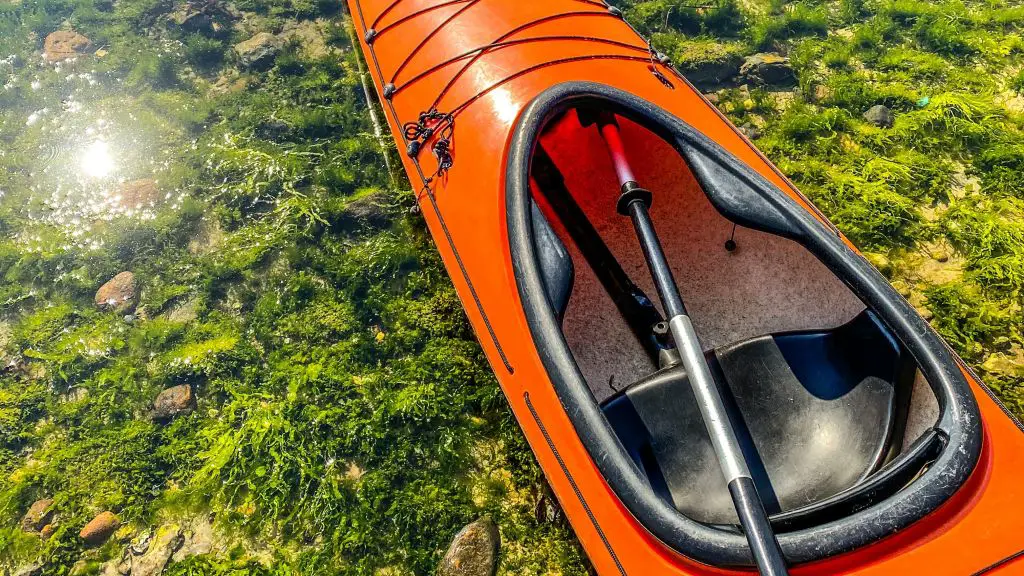
Durability versus Weight: Finding the Balance
The juxtaposition of durability and weight plays a critical role in selecting best kayak materials. Durable kayak materials, like rotomolded polyethylene, offer remarkable impact resistance, ideal for enduring the hardships of rocky streams and unpredictable conditions. However, they pose a challenge during transport due to their heft. Conversely, lightweight kayak materials, particularly those used in composite kayaks, facilitate ease of carrying and launching without the burdensome weight. Yet, the trade-off can be their heightened susceptibility to damage.
The industry has made strides in crafting kayaks that bridge this divide. Thermoformed kayaks are now highly sought-after for their moderate weight and enhanced resilience to scratches, effectively marrying the intrinsic strengths of polyethylene with the desirable lightness of composites.
Aesthetic Considerations in Kayak Material Choice
The allure of a kayak is often influenced by its appearance, where aesthetics converge with functionality. Many paddlers are drawn to the sleek, polished finishes of composite kayaks, which not only look splendid gliding across the water’s surface but also offer streamlined performance. The timeless beauty of wooden kayaks caters to enthusiasts who value natural elegance and the craftsmanship inherent in their construction, while the visual ruggedness of polyethylene appeals to those who prioritize function over form.
Transportation and Storage: Material Matters
For the avid adventurer or urban dweller where space is a premium, transportation and storage considerations are paramount. Innovative designs in kayak construction materials have introduced portable solutions such as folding and inflatable kayaks—a testament to the adaptability of kayak materials. These lighter, compact designs simplify the task of shuttling to and from the water and storing the kayak when it’s not in use. While they excel in convenience, it’s essential to assess any potential compromises in on-water performance and durability.
Introduction to Hard-shell Kayak Materials
When embarking on the search for the perfect kayak, understanding the diversity of kayak materials is paramount. The material used in the construction of a kayak’s hull plays a significant role in its durability, performance, and suitability for various water conditions.
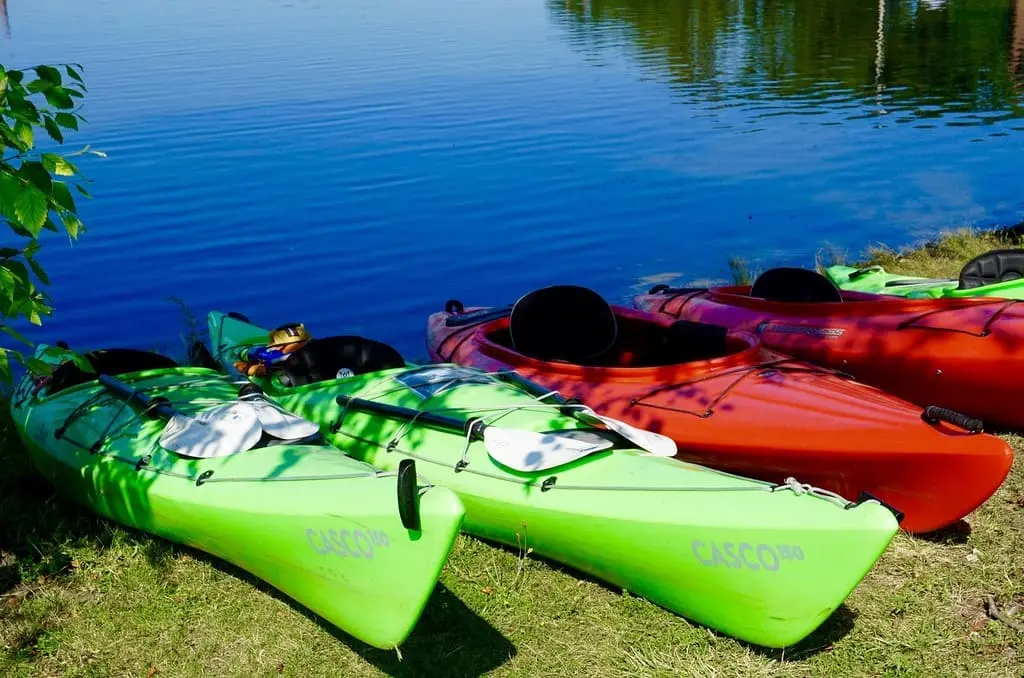
Types of kayak materials widely used in the manufacturing of hard-shell kayaks include polyethylene, thermoform plastics, composites, and wood, each with its manufacturing subtleties and paddler benefits.
Polyethylene kayaks, favored for their robustness, are shaped by the process of rotomolding—a technique that allows for uniform thickness and high durability, essential for withstanding impacts and rough conditions.
Advancing to thermoform plastics, these kayaks are revered for their sleek aesthetic and lightness. They are comprised of plastic sheets that are heated and molded to form a glossy finish, marrying functionality with visual appeal.
- Polyethylene: Known for its impact resistance and affordability, ideal for beginners and rough waters.
- Thermoform plastics: Offers a balance of performance and weight, suited for those seeking agility and portability.
- Composites: Such as fiberglass and carbon fiber, these materials promise elite performance and are the material of choice for competitive and long-distance paddling.
- Wood: Provides a traditional touch, with handcrafted designs that are both aesthetic and functional, complemented by modern protective coverings.
The elite composite kayaks are constructed from high-performance materials like fiberglass, aramid fibers, or carbon fiber. The preference for these materials arises from their unparalleled lightness and strength, granting paddlers the advantage in speed and maneuverability.
Finally, wooden kayaks bring the art of craftsmanship to the waters. Each vessel is a unique creation, brought to life through either stitch-and-glue or strip-built methods. When sheathed in fiberglass and varnish, these kayaks not only exude natural beauty but also boast impressive longevity and performance.
Whether you’re seeking leisurely river excursions or competitive races, the best kayak materials for your specific needs are out there. Now, let’s take a closer look at how these materials directly affect the kayaking experience.
Kayak Building Basics: Rotomolded Polyethylene
In the realm of kayak construction materials, rotomolded polyethylene holds a significant place due to its longstanding reputation for creating robust and enduring kayaks. Delving into the properties of various types of kayak materials reveals why rotomolded polyethylene kayaks are a top choice for both novice and experienced adventurers alike.
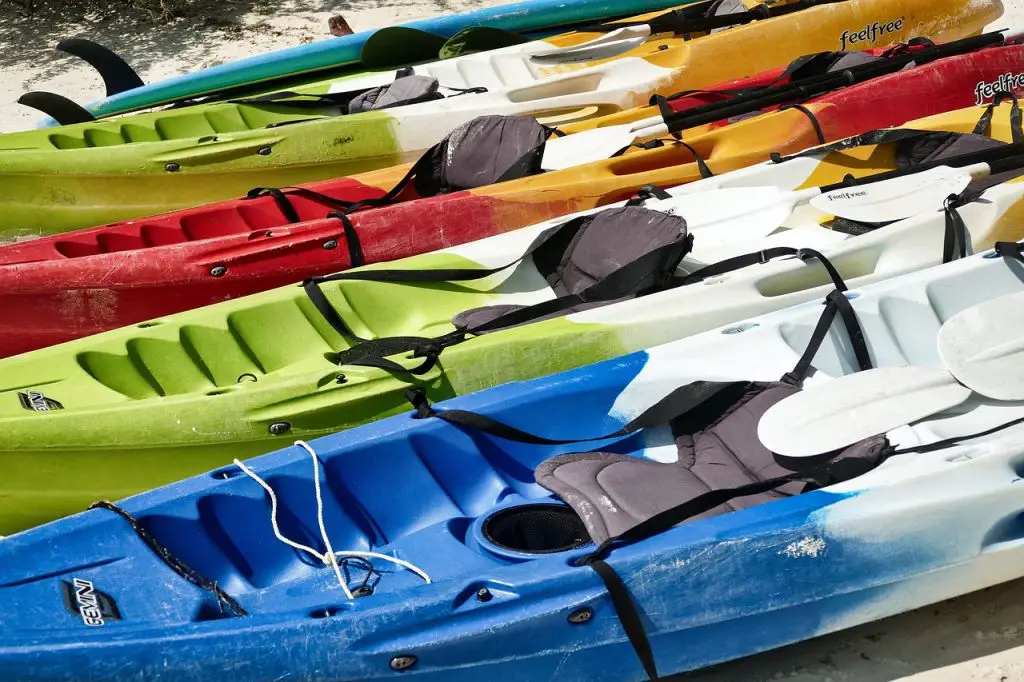
Benefits of Rotomolded Polyethylene
Rotomolded polyethylene’s popularity as a durable kayak material is no accident. This technique has revolutionized kayak manufacturing since its inception in the 1970s, providing numerous advantages:
- Affordability: Its cost-effectiveness makes it widely accessible to a diverse range of paddlers.
- Impact Resistance: Known for their capacity to withstand collisions and abrasive surfaces, these kayaks offer peace of mind during rugged excursions.
- Versatile Designs: The molding process allows for a wide range of shapes and features, accommodating various kayaking disciplines.
- Excellent Value: Rotomolded polyethylene kayaks provide an admirable balance of performance and price, offering a practical entry point for many into the sport.
Challenges with Rotomolded Polyethylene
Despite its benefits, rotomolded polyethylene does present some challenges that are critical for potential owners to consider:
- Weight: These kayaks are generally heavier in comparison to their counterparts made from lighter kayak construction materials.
- UV Sensitivity: Prolonged exposure to sunlight can degrade the material, though this can be mitigated with proper care and UV protection treatments.
- Oil-Canning: Hull integrity could be compromised over time, leading to warping or “oil-canning,” affecting the kayak’s performance.
- Increased Drag: Wear and tear from use can result in abrasions that may create more drag, making paddling more laborious.
While rotomolded polyethylene kayaks are renowned for their durability and versatility, these factors must be weighed carefully by those considering their kayak material options.
Thermoform Kayaks: A Closer Look at the Advantages
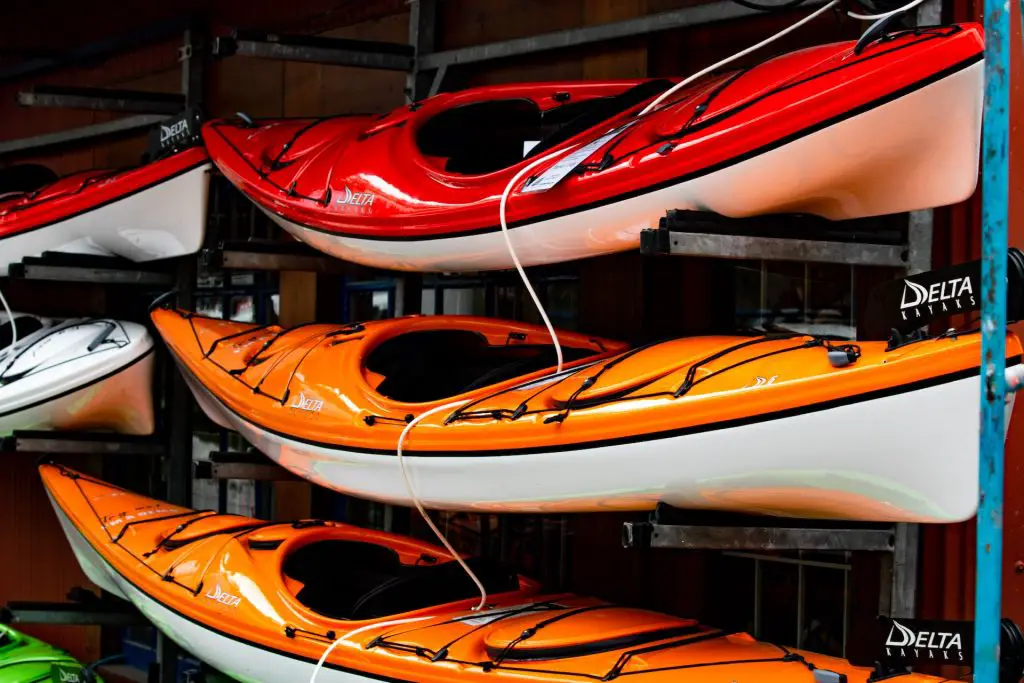
Thermoform kayaks have steadily gained popularity, thanks largely to their unique combination of features that situate them neatly between the high durability of polyethylene and the sleek performance of composite materials. By employing innovative kayak building materials, thermoform kayaks present several benefits for kayak enthusiasts:
- Weight Efficiency: Thermoform kayaks are cherished for their lightweight kayak materials, allowing for easier handling, transportation, and increased paddling speed, making them a favorite among recreational paddlers and those faced with carrying their kayak over land to reach remote launch sites.
- Durability: Despite being lighter, the kayak building materials used in thermoform construction are remarkably resilient. The high-impact resistance reduces the likelihood of damage when coming into contact with debris or during transport.
- Aesthetics: With a glossy finish akin to higher-end kayaks, thermoform kayaks offer an attractive appeal. This aesthetic, combined with the variety of colors and designs, make these kayaks a visually appealing option on the market.
One of the cornerstones of thermoform kayaks is the advanced plastic laminate process, where sheets of lightweight kayak materials are heated then molded. An acrylic layer is applied to the exterior, enhancing UV protection and giving it the characteristic shine while maintaining durability. Compared to other types of kayak materials, the laminate composition delivers notable longevity and strength.
The construction process of thermoform kayaks endows them with an undeniable allure, not just surface deep but structurally as well, offering a blend of style and functionality that resonates with modern paddlers.
Amidst the merits, it is fair to note some considerations. Thermoform kayaks fare better in milder climates since extreme cold can make the ABS base layer susceptible to brittleness. Regardless, for many adventurers and kayaking aficionados needing a craft that balances price with near-composite performance, thermoform kayaks are an excellent option.
In conclusion, while they may have once been overshadowed by other more traditional options, thermoform kayaks with their innovative kayak building materials now offer exciting possibilities. They cater to a demographic looking for high-quality craftsmanship at a value-conscious point, without compromising the joys of kayaking.
The Elegance of Composite Kayaks
Among the plethora of kayak construction materials available today, composite kayaks stand out as a pinnacle of innovation and performance within the paddling community. Not only do they embody an architectural grace, but they also boast advancements in design that cater to a diverse range of kayakers’ needs.
Decoding the Different Composite Materials
The world of composite kayaks is rich with high-performance materials, each with their own characteristic strengths. Fiberglass, for one, is the stalwart of the composite world, offering a commendable balance between durability and weight, which translates to a more manageable kayak that still holds its own against the elements. Fiberglass earns its reputation as one of the best kayak materials for those on a budget without compromising quality.
Aramid fibers, often referred to by the brand name Kevlar, is another prime contender. It’s heralded for its phenomenal strength-to-weight ratio, making it a favored choice among expedition enthusiasts and those looking for a lighter, yet robust, vessel for longer journeys.
At the zenith of lightweight technology is carbon fiber, the premium choice for elite athletes and racers. It offers unparalleled rigidity and weight savings, which not only improves handling but also increases speed—a critical factor in competitive environments.
Composite Kayaks: Performance and Price
When it comes to kayak hull materials, the composites used in kayak construction are unmatched in their combination of sleek aesthetics and performance. Their stiff structures cut through water with impressive efficiency, granting paddlers speed and responsiveness. The trade-off, however, is the price point. Composite kayaks represent a significant investment when compared to their plastic or inflatable counterparts. Yet, for many, the longevity and performance enhancements justify the upfront cost over the lifespan of their paddling pursuits.
- Fiberglass – Affordable and durable with a superior strength-to-weight ratio
- Aramid fibers (Kevlar) – Lightweight and sturdy, perfect for extended adventures
- Carbon fiber – Elite material for top speed and ultralight design
Ultimately, the allure of composite kayaks is evident in their superior handling, aesthetic elegance, and advanced materials, making them a top-tier choice among paddling connoisseurs. Whether it’s the unrivaled speed of carbon fiber or the durability of fiberglass, these materials are shaping the future of kayak craftsmanship.
Exploring the Beauty of Wooden Kayaks
Within the diverse world of kayak construction materials, wooden kayaks stand apart as a testament to the marriage of traditional craftsmanship and contemporary eco-consciousness. The appeal of these vessels is more than skin deep—wooden kayaks are known for their exceptional aesthetics and sustainable attributes, drawing enthusiasts who appreciate their natural elegance and eco-friendly kayak materials.
Favored by DIY artisans and professional builders alike, wooden kayaks allow for a personal touch in every curve and line. Utilizing classic techniques like stitch-and-glue and strip-built methods, enthusiasts can transcend the boundaries of commercial designs, producing kayaks that reflect their unique vision and prowess.
- The stitch-and-glue technique is approachable for beginners, offering straightforward construction and rewarding results.
- Strip-built kayaks offer a more intricate and refined outcome, ideal for those with greater woodworking experience.
Whichever style they choose, builders are guided by precise plans and kits, culminating in durable, lightweight kayaks ensconced in layers of protective fiberglass, resin, and varnish. These materials not only ensure longevity but also enhance performance, granting wooden kayaks a competitive edge akin to their synthetic counterparts.
Wooden kayaks encapsulate a deep connection to kayaking’s history, while their reliance on eco-friendly kayak materials resonates with modern desires for sustainable practices in recreation.
This devotion to sustainable building practices also positions wooden kayaks favorably as environmentally-friendly alternatives in water sports. Wood, as a renewable resource, used in conjunction with modern, eco-conscious kayak building materials offers an environmentally responsible option for adventurers seeking to mitigate their ecological footprint.
Ultimately, the art of wooden kayak construction is an immersive process that delivers far more than a mode of water transportation; it is an act of creation that harmonizes the past with the present, technique with artistry, and function with sustainability—and this is the true essence of wooden kayak construction materials.
The Versatility of Folding and Inflatable Kayaks
The modern kayaker craves options that cater to a dynamic lifestyle, balancing the needs for space-saving designs with the desire for memorable adventures. Enter the ingenious solutions offered by folding and inflatable kayaks, two variations that have revolutionized kayak portability and storage. With advancements in lightweight kayak materials and design ingenuity, these vessels have opened the doors to aquatic exploration that was once impossible for urban dwellers or those transient in nature.
Folding Kayaks: Convenience Meets Compactness
When you blend convenience with compactness, folding kayaks come to the forefront. They have earned their place in the market not just for their ability to pack down into luggage-sized parcels, but for the simplicity they bring to the kayaking experience. Their construction involves durable materials, often ranging from hardened canvas to resilient nylon skins stretched over firm frames of either wood or aluminum. These frameworks provide stability that rivals their hard-shell counterparts, yet fold down efficiently for easy transportation and storage. Recent innovations have introduced folding kayaks with interlocking panel technology, further boosting their portability and durability.
Inflatable Kayaks: Portability and Ease of Use
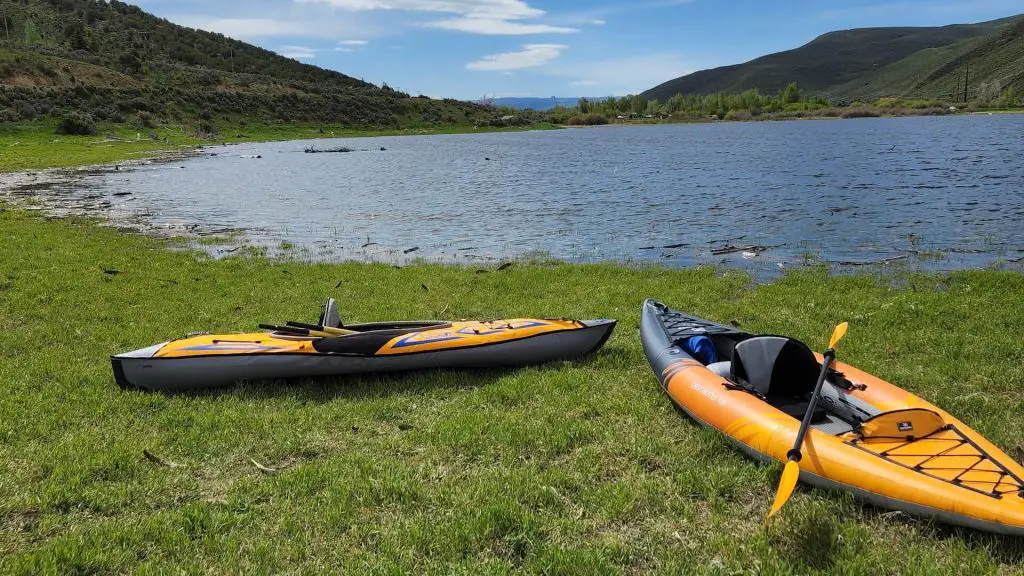
The phrase “on-the-go” finds its true companion in inflatable kayaks. Created for ultimate mobility, these kayaks feature high-pressure air chambers that bring out impressive rigidity and shape once inflated, so much so that the performance on the water can sometimes mimic that of a fixed-shell kayak. Thanks to the durable kayak materials utilized in their design, such as heavy-duty PVC and drop-stitch technology, these light watercraft can often withstand the rigors of river and lake excursions. When deflated, they can be packed into small carrying cases or backpacks, epitomizing the concept of portable adventure gear.
Both folding kayaks and inflatable kayaks typically come with repair kits to ensure lasting use and quick fixes. While folding kayaks may require more maintenance due to their complex frame systems, inflatable kayaks practically offer maintenance-free operation, save for the occasional patchwork. What brings these two types together is their shared promise: an invitation to explore further, push the limits of travel, and enjoy the serenity of nature, all without the burden of bulky equipment.
Kayak Materials and Design: An In-Depth Analysis
As paddling enthusiasts delve into the world of kayaking, they recognize that the choice of kayak materials is not merely about aesthetics; it significantly influences the vessel’s handling, speed, and overall water performance. The intricacies of kayak hull materials are pivotal in determining how the craft interacts with water, thus affecting the hydrodynamics of kayaking. Meanwhile, environmental concerns propel the pursuit of eco-friendly kayak materials, pushing the boundaries of innovation and introducing an array of sustainable options.
How Kayak Hull Materials Affect Hydrodynamics
The material used in the composition of a kayak’s hull plays a critical role in its hydrodynamic efficiency. Rotomolded polyethylene, beloved for its durability, often suffers from increased drag due to surface abrasions incurred over time. Conversely, slick and smooth finishes on composite kayaks minimize resistance and enable the crafts to slice through the water with greater ease, augmenting their speed and making them the best kayak materials for performance-centric paddlers.
Eco-Friendly Kayak Materials and Innovations
Amidst rising environmental consciousness, the kayak industry is experiencing a shift towards more sustainable practices. Thermoform plastics are lauded for their potential for recyclability, presenting an eco-friendly kayak material alternative that mitigates ecological impact. With heightened awareness and innovations in material sciences, manufacturers and consumers are increasingly aligned in their commitment to eco-friendly principles without compromising the quality and resilience of the kayaking experience.
Conclusion
When it comes to selecting the ideal kayak materials, the decision ultimately boils down to a blend of personal preference and practical functionality. Polyethylene stands out in the realm of durable kayak materials, offering a robust and cost-efficient choice for those ready to brave the thrashing of waves or the novice eager to dip their paddles for the first time. Meanwhile, the allure of thermoformed kayaks lies in their polished aesthetic and lightweight structure, making them a favored pick among both recreational paddlers and touring aficionados.
For those who seek the pinnacle of aquatic performance, composite materials emerge as the champions. The fleet of kayaks crafted from fiberglass, aramid fibers, and carbon fiber are revered for their nimble, swift designs that are a testament to what many consider the best kayak materials. Yet, there is a niche for the wooden kayak, a vessel that marries artful tradition with individual craftsmanship, appealing to those who value customization and heritage in their seafaring journey.
Addressing the needs of the urbanite or the traveler, inflatable and folding kayaks are the go-to solutions, touting immense convenience due to their compactness and ease of transportation. Each type of kayak material brandishes its unique array of strengths and limitations, encompassing factors like cost efficiency, resilience, environmental footprint, and maintenance ease. This broad spectrum offers a rich palette for those navigating the waters of choice to find a kayak aligned with their ambitions and adventures.
FAQ
What factors should be considered when choosing kayak materials?
Factors to consider include performance, durability, weight, aesthetics, cost, environmental impact, and intended use of the kayak, such as recreational, touring, or racing. The balance between these factors will help guide the best type of material for your needs.
Why is polyethylene a popular choice for kayak building materials?
Polyethylene is a popular choice due to its affordability, impact resistance, and durability. It is particularly suitable for whitewater kayaks and recreational kayaks that may encounter rugged environments and require a sturdy construction.
What are the benefits and challenges of rotomolded polyethylene kayaks?
The benefits include cost-effectiveness, durability, and ease of maintenance. Challenges are susceptibility to UV damage, weight (as they are heavier than some other materials), and potential hull deformation known as oil canning.
How do thermoform kayaks balance cost and performance?
Thermoform kayaks balance cost and performance by offering a lighter weight and a sleek, glossy finish similar to composite kayaks, but at a more affordable price point. They also provide a good level of scratch resistance and are often recyclable, adding to their appeal.
What types of composites are used in composite kayak construction, and what are their qualities?
Common composite materials used in kayaks include fiberglass, known for its good strength-to-weight ratio; aramid fibers like Kevlar, celebrated for lightness and toughness; and carbon fiber, offering the highest strength and lightest weight, ideal for performance kayaks.
How does the design of a kayak hull affect its performance on the water?
The kayak hull design determines the kayak’s hydrodynamics – how it moves through the water. Materials that allow for a smoother finish can reduce drag and enhance speed, while rough surfaces or protrusions can increase drag and slow the kayak down.
Can the material choice of a kayak impact the environment?
Yes, material choices can impact the environment. For example, some materials, like certain thermoform plastics, are recyclable and represent a less harmful option for the planet. Meanwhile, composite kayaks can be less eco-friendly due to the difficulty of recycling resin-impregnated fibers.
What are the advantages of investing in a composite kayak?
Composite kayaks offer superior performance due to their lightweight and rigid construction, resulting in faster and more responsive movement in the water. They are often favored by serious paddlers, racers, and those willing to invest in a high-quality, long-lasting vessel.
What makes wooden kayaks unique compared to other materials?
Wooden kayaks are unique for their timeless aesthetic and the ability to be handcrafted. They can be made from kits or custom built, often involving eco-friendly materials. Plus, they usually feature a lightweight design when reinforced with fiberglass and varnish.
How do folding and inflatable kayaks address transport and storage issues?
Folding and inflatable kayaks are highly portable, easy to transport, and solve storage issues with their compact designs. Folding kayaks can be disassembled to fit into small spaces, while inflatable kayaks can be deflated and carried in a backpack or bag.

